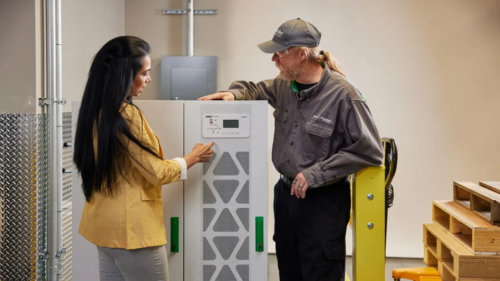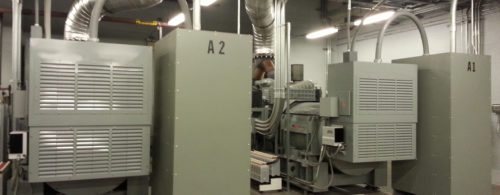Which UPS is Right for the Job: Static, Rotary or Hybrid?
The Institute of Electrical and Electronics Engineers seems as good of a place as any to go for a definition of the uninterruptible power supply (commonly known as the UPS). According to IEEE Std 446—the IEEE Orange Book—the UPS is “a system designed to automatically provide power, without delay or transients, during any period when the normal power supply is incapable of perf...
The Institute of Electrical and Electronics Engineers seems as good of a place as any to go for a definition of the uninterruptible power supply (commonly known as the UPS). According to IEEE Std 446—the IEEE Orange Book—the UPS is “a system designed to automatically provide power, without delay or transients, during any period when the normal power supply is incapable of performing acceptably.”
But there are many types of UPS systems available—and a number of ways to categorize them. First, UPS are either off-line or online. When sensing a normal power outage, an off-line UPS operating in standby mode transfers online to provide backup power.
In most cases, the transfer is accomplished within one cycle and goes virtually unnoticed by general loads. These days, however, sensitive electronic loads often can’t tolerate a power outage of even one cycle and should be protected by an online UPS that provides power to the load continuously and can switch to backup power without interruption. By cleaning the normal power, online UPS systems also provide power free of interruptions, voltage or frequency variations and transients.
Only online UPS systems provide complete protection to electronic equipment and can be further categorized into three types: static, rotary and hybrid:
In a static UPS, a rectifier transforms power from alternating current (AC) to direct current (DC). During normal operation, the DC charges storage batteries and then is transformed back to AC through the inverter. During emergencies, the batteries supply power to the inverter and provide the required AC output.
Energy storage is usually backup and backup time is from 10 min. to 30 min., depending on the amount of battery capacity. These systems are sized to allow time for an orderly shutdown if the backup generator fails to come online. There is usually no redundancy unless paralleled with additional rectifier and inverter sets.
In the rotary UPS, in its simplest variation, normal power feeds an AC motor that drives an AC generator. During normal operation, the rotary UPS acts as a mechanical buffer to filter out transients. During emergencies, the rotational energy of a flywheel provides the backup energy supplying the required AC output. The backup time length ranges from 10 seconds to a few minutes, depending on the size of the load. It can be combined with batteries for additional time. There is usually no redundancy in these systems, unless paralleled with additional motor generator sets. But paralleling induction motor-generator sets can be difficult.
Finally, the hybrid UPS combines the benefits of the static UPS with those of the rotary UPS by providing dual internal power paths to the motor-generator. The hybrid system improves battery life, system reliability and transient filtering. With both batteries and kinetic stored energy as a power source, the limiting factor is battery capacity, generally ranging from 10 min. to 30 min.
A strong point of hybrid systems is that they provide fully redundant pathers through the rectifier and inverter and through the motor-generator.
The Advantages of Online UPS
Provides continuous power to sensitive loads.
Can switchto backup power without interruption.
Cleans the normal power to eliminate power interruptions, voltage and frequency variations and transients.
Provides complete protection for electronic equipment.
Do you have experience and expertise with the topics mentioned in this content? You should consider contributing to our CFE Media editorial team and getting the recognition you and your company deserve. Click here to start this process.




